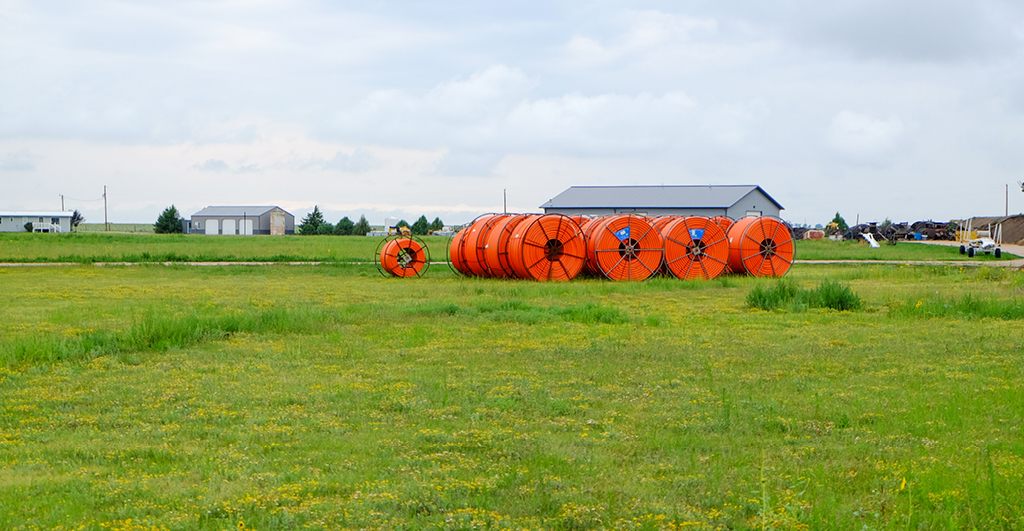
Widespread access to broadband is changing the way we live, work and design our cities. But not every community is benefiting from this sweeping change. This is especially true across rural America, where the digital divide threatens to leave many smaller communities behind.
For these communities and the rural electric co-ops that serve them, access to high-speed broadband services can be a game-changer. All too often, what stands in their way is a question of stakeholder buy-in. To answer typical hesitancy around the price tag, the best starting point is clear information about the community benefits and economic impacts.
In summer 2018, Purdue University’s Center for Regional Development released a study[i] indicating the state of Indiana could generate a $12 billion economic impact over 20 years with a meaningful investment in bringing broadband access to rural areas. The report, commissioned by Indiana Electric Cooperatives and Tipmont REMC, estimated that every dollar invested in broadband returns nearly four dollars to the economy. By any measure, a 400% ROI is impressive.
While electric co-ops and public power utilities are well aware of the potential benefits for their communities, the decision to invest in fast broadband requires consensus from multiple stakeholders. Depending on the organization, this can include obtaining buy-in from board members, local government and key community leaders. That means overcoming the fear, uncertainty and doubt (a.k.a. “FUD Factor”) inherent in any significant change.
The most crucial step in any rural or municipal broadband initiative is always the first one—building the case. The “go, no-go” decision typically comes down to a rigorous cost/benefit analysis. Stakeholders must understand why investment in broadband makes sense and realize that by not investing, they are doing a disservice to the communities and customers they serve. It is up to the utility to illustrate the power of the technology and the value of the investment in it.
Entire books have been devoted to the benefits of broadband access. Boosting broadband in rural and smaller communities can spark growth in diverse areas including education, economic and workforce development, innovation, consumer savings and farm income. Below are five broad areas where the effects are especially keenly felt.
Improved quality of life: Telecommuting, for example, allows individuals to choose where they live based on the quality of the community, not its proximity to their office. According to the 2017 Virtual Vocations Year-End Report, one in four US workers now telecommute thanks to accessible, affordable broadband. Broadband also enables a wide range of benefits such as telemedicine, distance learning and improved access to content and social media, all of which translate to better health and quality of life.
More responsive, efficient civic leadership: In cities large and small, local governments are using broadband to significantly improve how they respond to changing needs in their communities. This includes using broadband’s high-speed video capabilities to host virtual town halls. Affordable community-wide access also encourages convenient online self-service, so that residents can renew their driver’s license, pay property taxes and utility bills, and get updates on municipal construction, all without leaving their homes. By enabling mobile technologies such as geofencing, a broadband infrastructure allows public safety officials to share critical information regarding weather and potential emergencies. It also provides real-time data transmission that helps police track and respond to public safety threats.
Modernized electric system: A fiber-based infrastructure enables utilities to create a smarter, more resilient grid that can scale in size, scope and services as the community grows. One result is improved overall service reliability that reduces power disruptions and speeds outage restorations. Using remote technologies to monitor the smart grid, utilities are also able to reduce peak energy loads to save operational costs. Electric co-ops can also generate new revenue from additional fiber services to offset flat or declining electricity revenue.
Enhanced business services: Access to super-fast fiber infrastructure is vital for business productivity and growth. It enables businesses of all sizes to take advantage of the Internet of Things (IoT), automation, workforce mobility, and improved research. Perhaps more importantly, broadband opens doors for local businesses to access global markets and sell their goods and services to consumers and suppliers around the world.
Long-term community growth: A digital infrastructure that is both utilized and evolving is a leading indicator of a vibrant and growing community. Connected schools and libraries, an educated workforce, virtual medical services and more efficient use of resources all make communities more attractive to new businesses and families, while enabling existing residents and businesses to keep flourishing.
This list represents a tiny sample of benefits that can bolster a strong case for rural and municipal broadband investment. Each utility must pick and choose the benefits that best apply to their communities. Once the benefits have been articulated, they are measured, and the results evaluated. The process of building the case has the added benefit of helping the utility or co-op clarify its vision, goals and strategies to ensure that the community-inspired project delivers the right results.
A successful broadband initiative is founded on community consensus and support. Building a broad and strong base begins by developing a business case that is both aspirational and impossible to ignore from a cost/benefit perspective. At Fujitsu, helping utilities and co-ops make the strongest possible case for broadband infrastructure and getting stakeholders to rally around a shared vision is a big part of what we do. Our vision? Obliterate the digital divide, one community at a time. For more information, visit us at https://www.fujitsu.com/us/products/network/industries/utility/index.html
[i] Estimation of the Net Benefits of Indiana Statewide Adoption of Rural Broadband; Purdue University Center for Regional Development, research study; August 2018